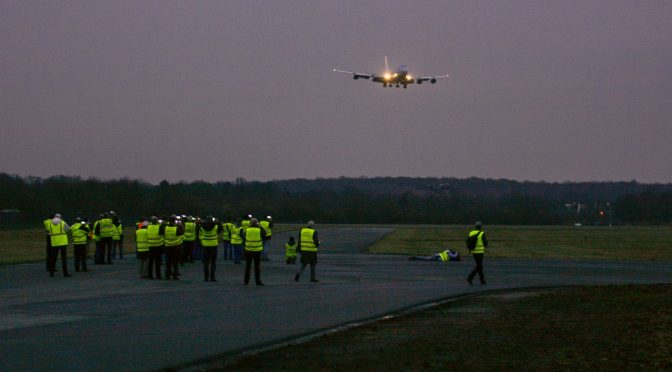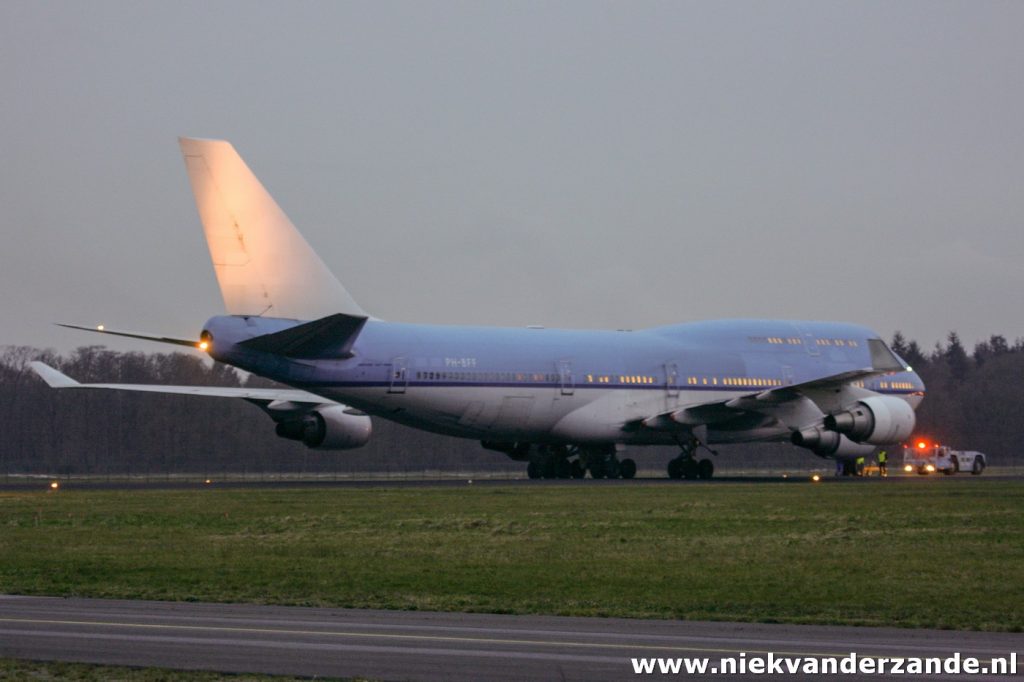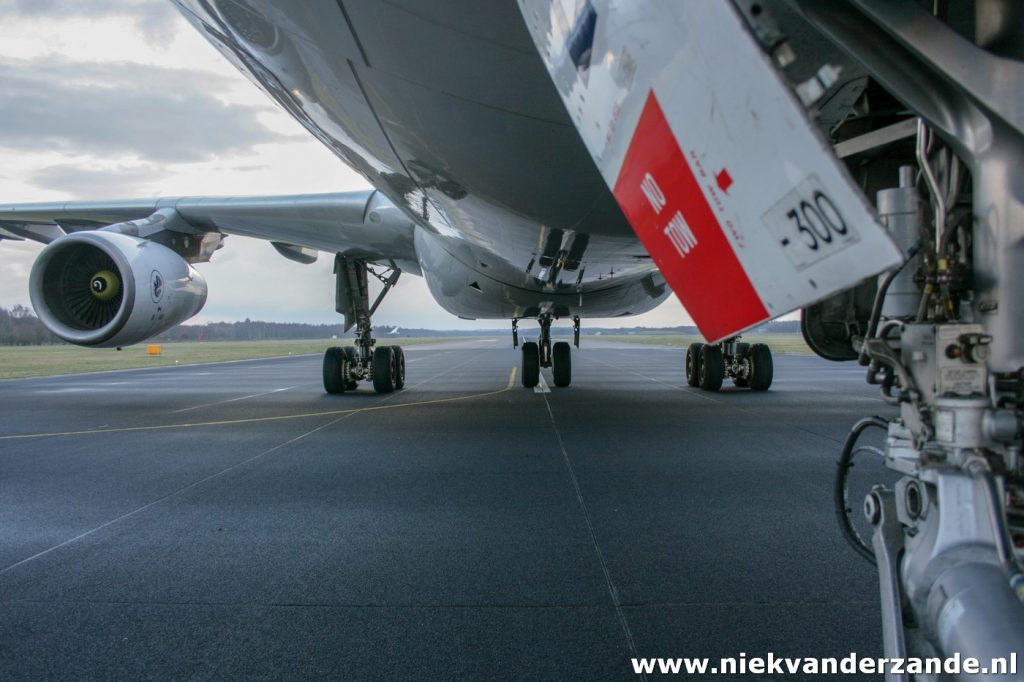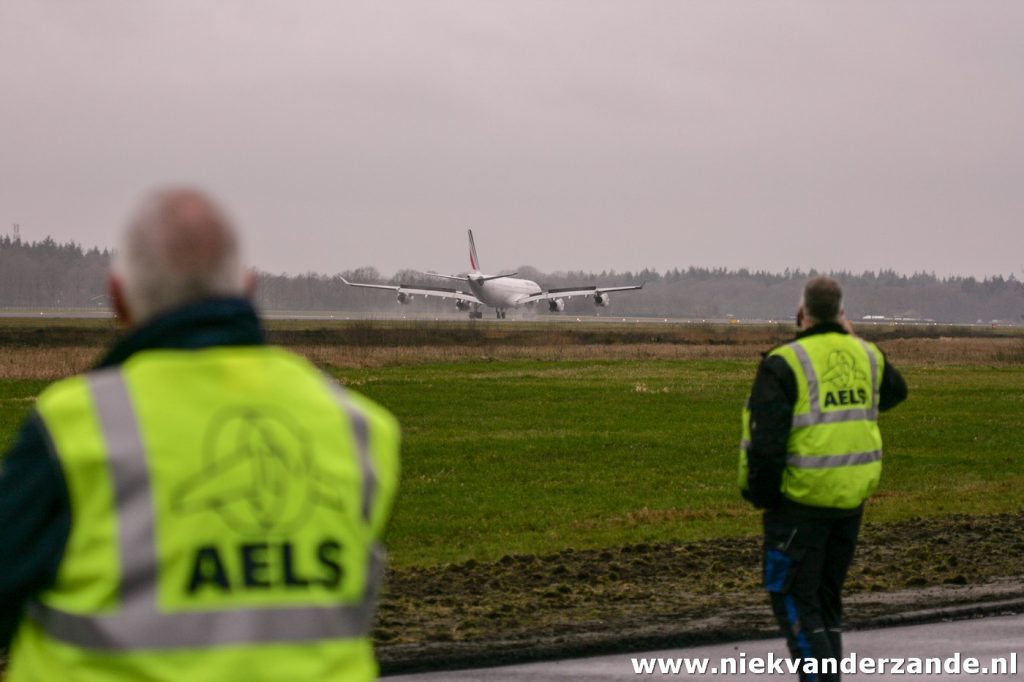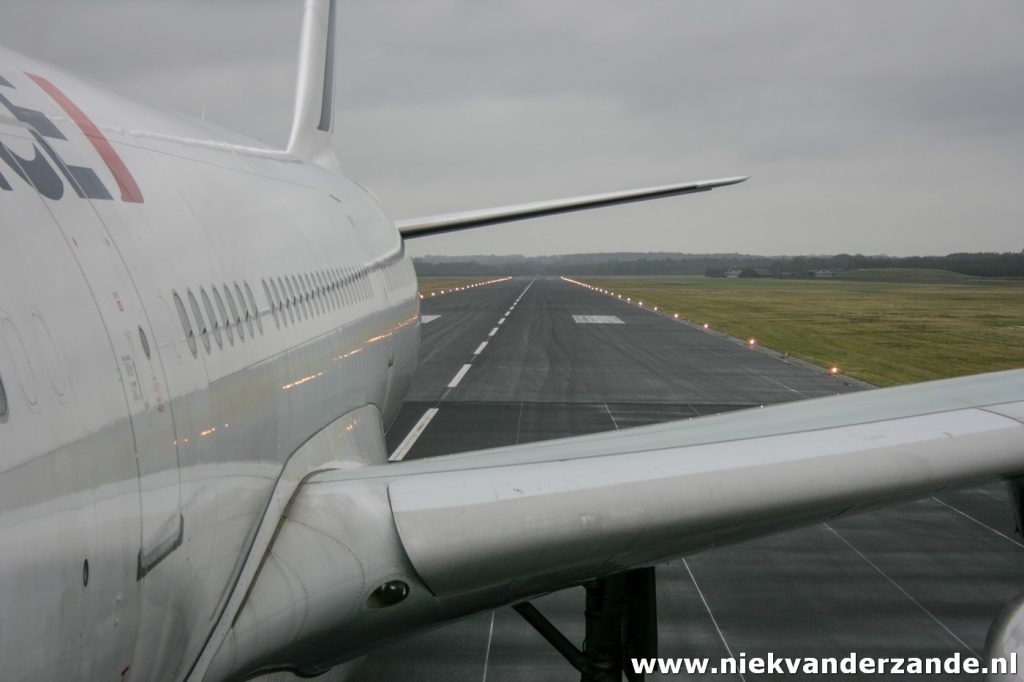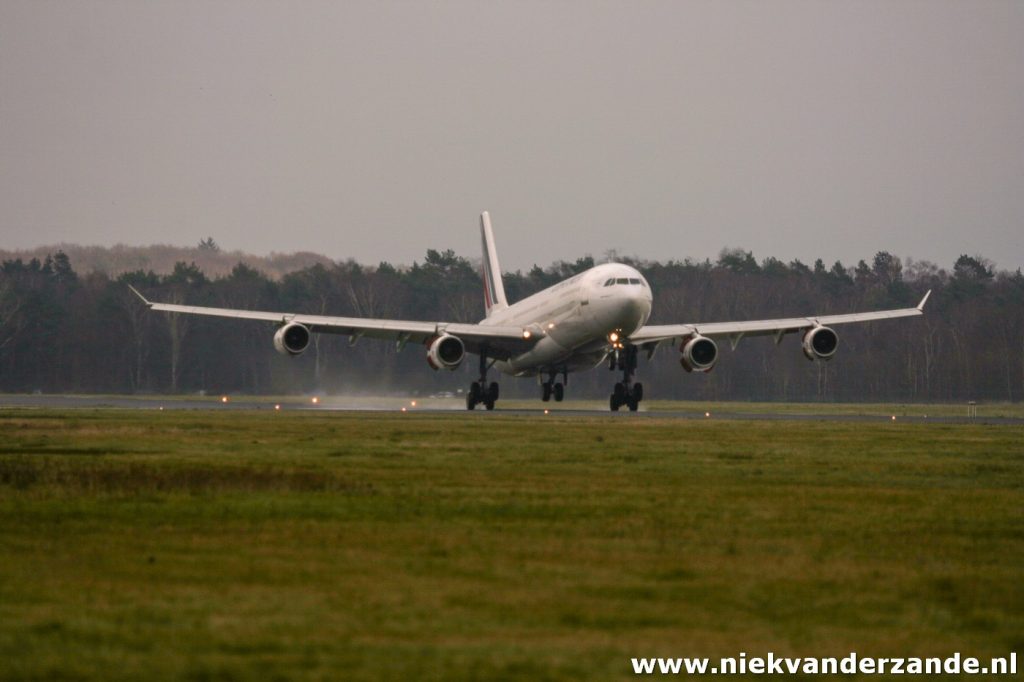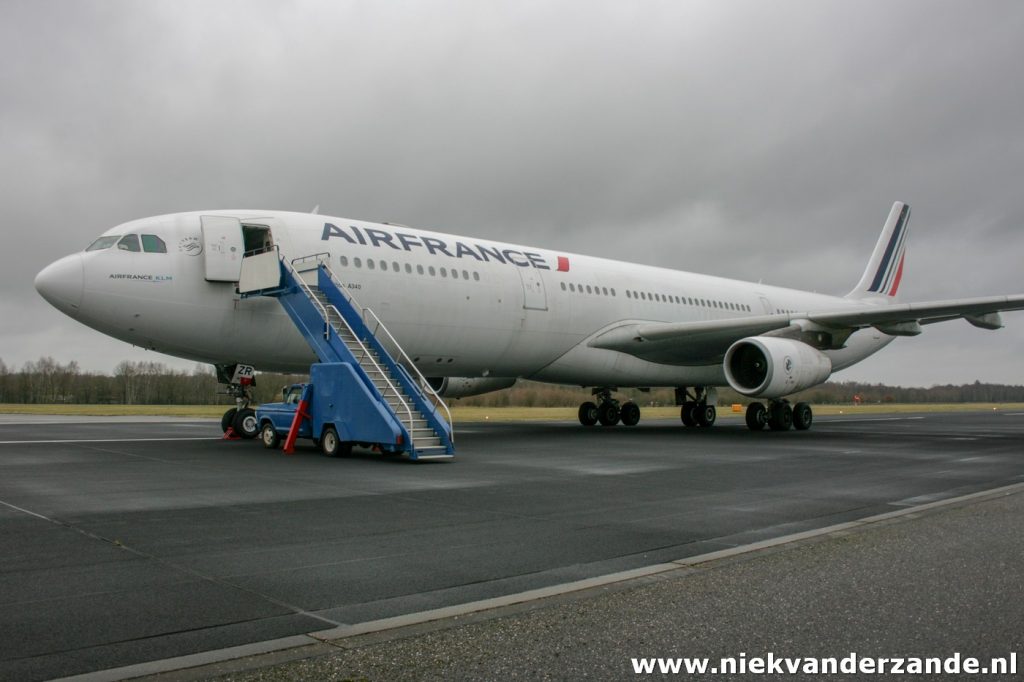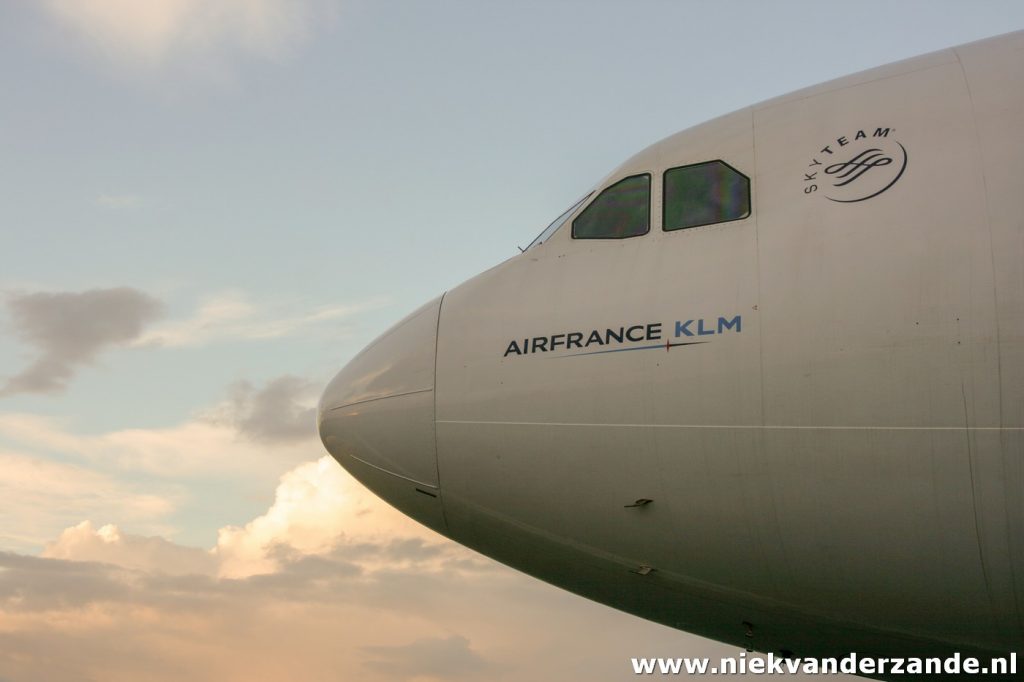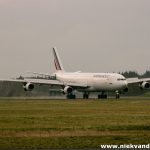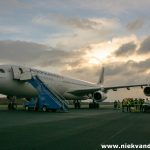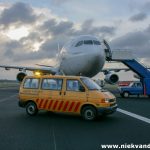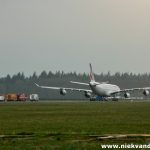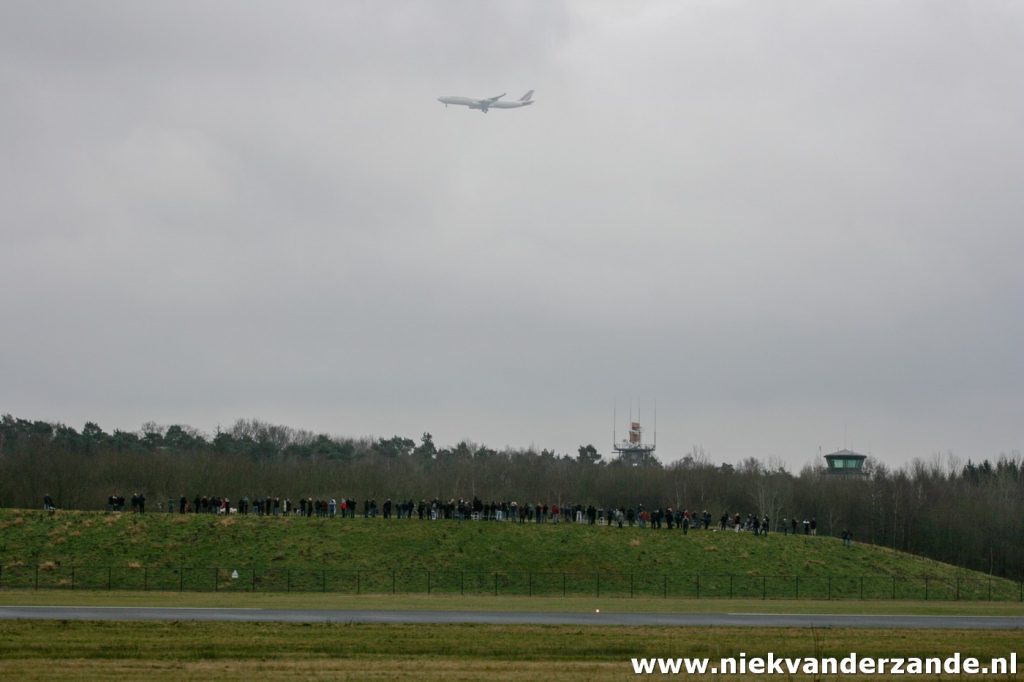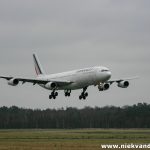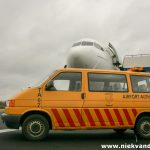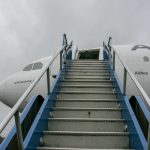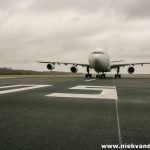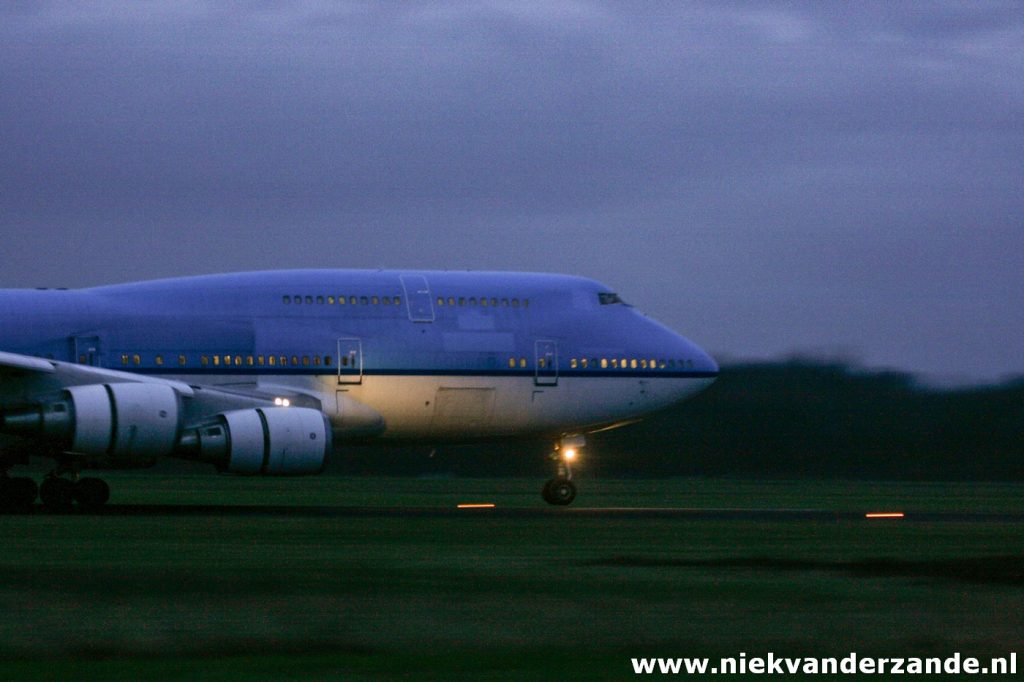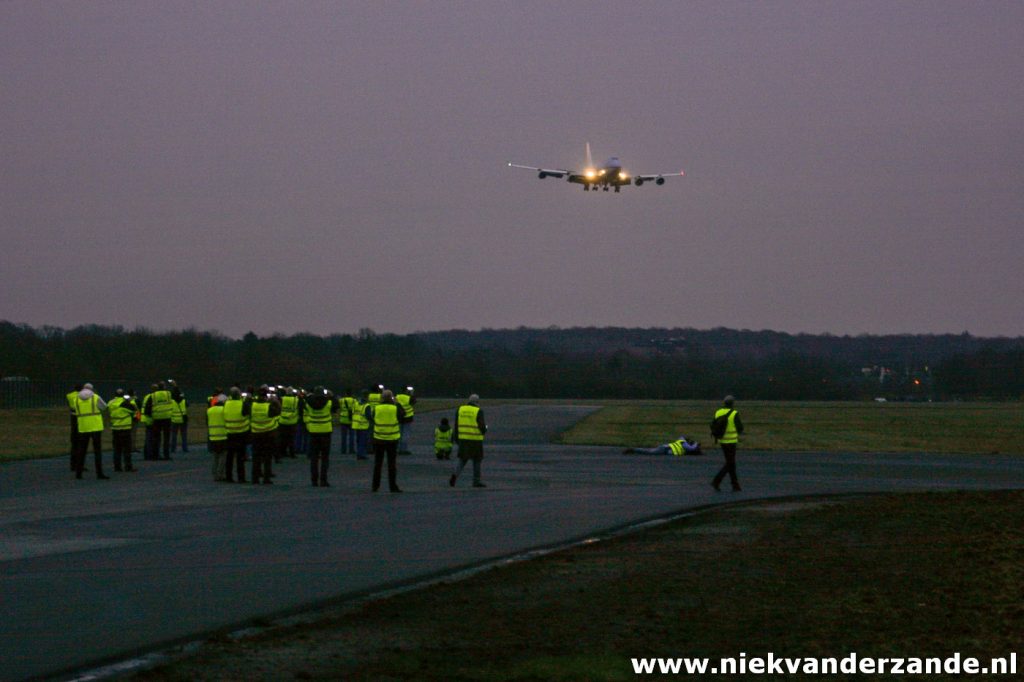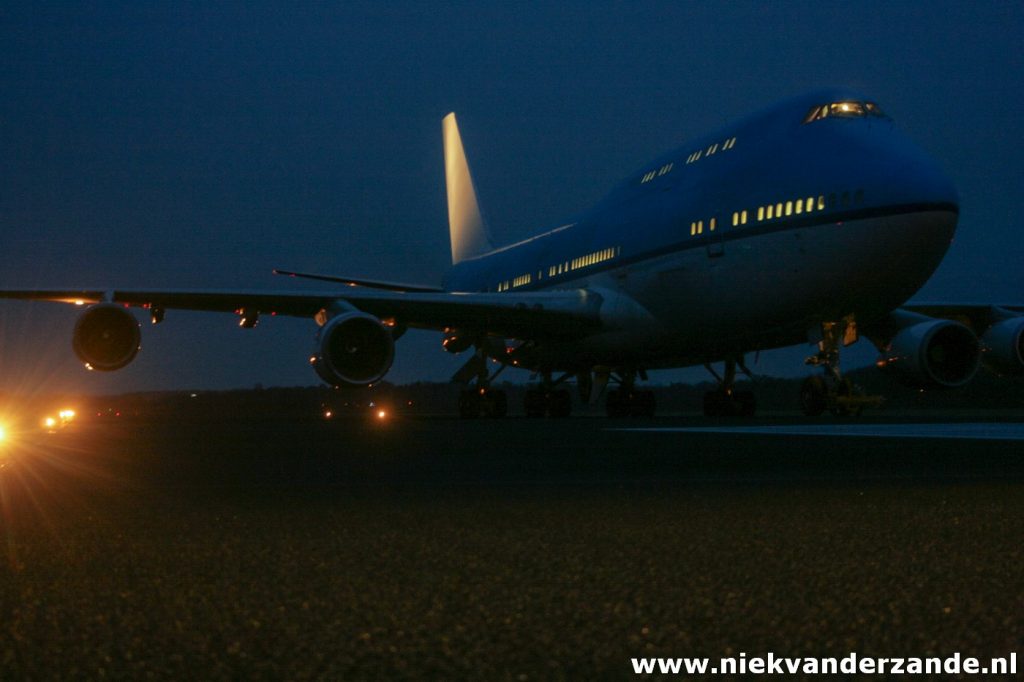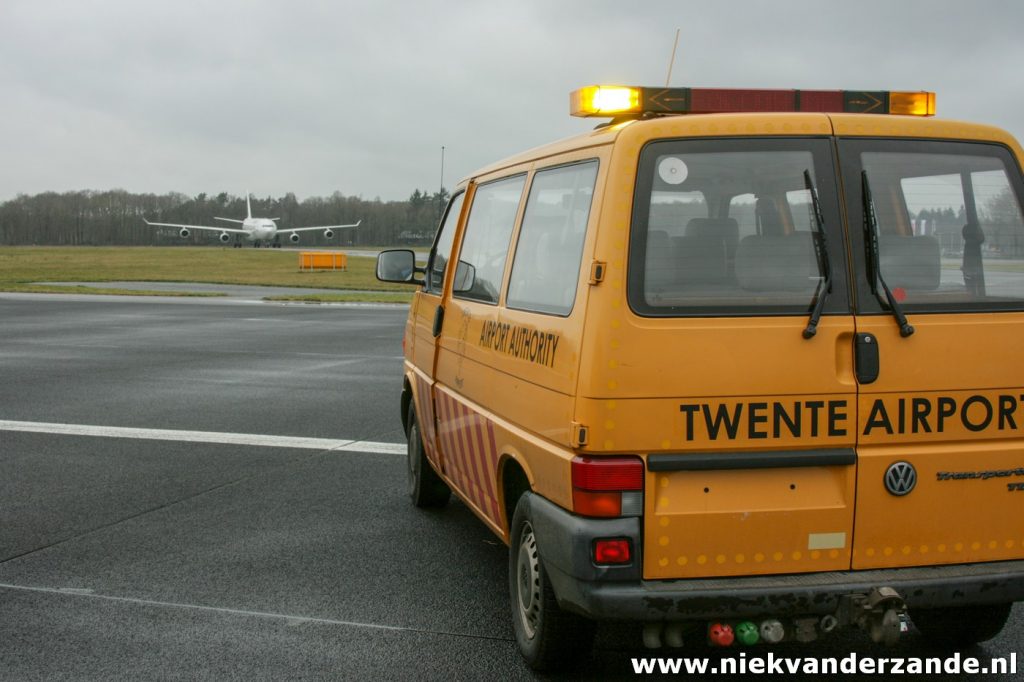The month of January 2018 was a very busy month for Twente Airport, both within and outside of the fences. The reason for this was the arrival of no less than 3 heavy widebodies in one week. All three aircraft made their final flight to Twente Airport, where dismantling would follow by AELS.

Many people know the large aircraft boneyards like Mojave and AMARG, but AELS chose a different approach when it comes to aircraft dismantling. Costs can be saved by chosing to dismantle aircraft in the region where they come from, which already reduces the amount of fuel that is required to transfer the aircraft on the final flight.
What is AELS
AELS is an aircraft disassembly and dismantling company that provides full scale solutions for aircraft that have reached their (economical) end of life. The services of AELS can be split up in 3 segments, where they often come together in one project:
- Aircraft disassembly and dismantling
- Recycling of aircraft parts
- Component Management
The fact that AELS is a relatively small company means that they can quickly adapt and react to the customers’ needs.
History of AELS
The history of AELS starts with its founder, Derk-Jan van Heerden, a couple of years before the establishment of the company in April 2006. In that period Mr van Heerden asked himself what was happening with aircraft that had stopped flying and he decided to find out more on this subject. This proces lead to him graduating on this subject after which he began to create a business plan for AELS. After a short period with KLM Engineering & Maintenance, where he was responsible for the dismantling of a Boeing 747, AELS was founded by Mr van Heerden in 2006.
Nowadays the AELS team assists aircraft owners all over the world in the dismantling of their aircraft. AELS facilitates the complete process, from the arrival of the airplane to the sale of the last piece of aluminium. During the short existence of the company, more than 40 aircraft have already been processed in a sustainable manner, where the goal is to reuse all components.
Initially the disassembly activities were based at Woensdrecht, in the south of the Netherlands. The downside of this location was however, that wide-body aircraft could not be processed there, due to the lack of space. Therefore it was decided to move the company’s activities to Twente Airport, where the first airframe – a Swiss Airbus 340 – arrived on 27 April 2017. AELS then made clear that they had larger plans and were looking to acquire more airframes.

Three Widebodies in one week
By the end of December 2017, messages started seeping in that , after the arrival of the first KLM Boeing 747, more was to be expected at Twente Airport in January. Almost everybody believed that this would be the 2nd KLM Boeing 747, the PH-BFF. For many it came as a surprise that next to this Boeing, also 2 Air France Airbus 340s were scheduled to arrive at Twente.
A disadvantage of January is that normally the weather is not all that good, grey skies, low clouds, snow and rain dominate the winter period in the Netherlands. These weather conditions can cause issues at Twente Airport, as it is a VFR (Visual Flying Rules) only airfield. VFR dictates that there has to be a minimum cloud base of 1500ft and a visibility of 5 kilometers. Because of these reasons the flights were several times postponed to different dates and on the day itself the arrival time was also changed several times.
F-GLZI
The first aircraft that was scheduled for arrival was Air France’s A.340-311 F-GLZI, which was due to arrive on the 19th of January. This aircraft was ferried from Paris – Charles de Gaulle to Twente Airport, a flight of approximately an hour. Due to a combination of strong winds and low ceiling, the flight was postponed several times on this day, after which the Airbus finally arrived at quarter to four. At that time, there was no longer a tow truck driver available, so that the aircraft was parked at Twente’s Runway 05 end. This was something that was appreciated by many aviation enthusiasts, but less by the members of the flying club. They could not use the 3km runway that weekend.
F-GLZR
Next up was Air France Airbus 340 F-GLZR on the 22nd of January. On this day the crew was prepared early on the day to make the short flight form Paris to The Netherlands. However, because the flight was a non-commercial flight, they had to join the back of the queue at CDG to obtain a slot or get a towing truck for pushback. When finally F-GLZR’s symbol lit up on the Flightradar app, a sigh of relief went through everybody on or around Twente Airport.
PH-BFF
Finally, on the 25th of January the last flight of KLM’s Boeing 747 PH-BFF “City of Freetown” was scheduled to take place from Amsterdam to Twente. This flight had received quite some publicity through the regional media channels, so the spotters hill at Twente was filled with spectators early that day already. This was the shortest flight of this week, but later it proved to be the most difficult one as well. All day long, the cloud base above Twente was to low, so that the flight could not take place at that point. Throughout the day, the AELS and Twente Airport staff were in contact with the flightcrew, who were already aboard the aircraft since 10 in the morning. Finally, by the end of the afternoon, the clouds broke and the ceiling was high enough.
When this became clear, the puzzling and brainstorming started. The Boeing had to arrive before the Universal Daylight Period (UDP) expired, as Twente is a VFR only airport. On the 25th of January this UDP ended at 17.30 local time. An extra problem was that prior to the arrival of the PH-BFF, two bizzjets were scheduled to arrive and depart. These aircraft had already departed their airport of origin, so cancelling them was no longer possible. These jets also had to leave Twente before the Boeing’s arrival, as otherwise they would be stuck at Twente (the runway would be blocked with a large piece of blue metal).
All in all this was a big puzzle, but in the end the last flight of the PH-BFF could take place. At 17.30 precisely, with the last bit of daylight, the wheels of the 747 were pushed against the tarmac for the very last time. After this, the City of Freetown was towed through the darkness towards the AELS platform. Before this could take place, first an A340 had to be repositioned, so that the Boeing could be parked next to Hangar 8. Once parked over there, the crew could finally exit the aircraft after a very long day. Flights to New York usually take them less time than this short hop.
After this flight, things got “quiet” at AELS. They now own 4 widebodies, of which two are parked at the former Runway 11 and two next to the AELS hangar. Only once these aircraft have been dismantled will there be space for new acquisitions. Who know what will be the next arrival….

